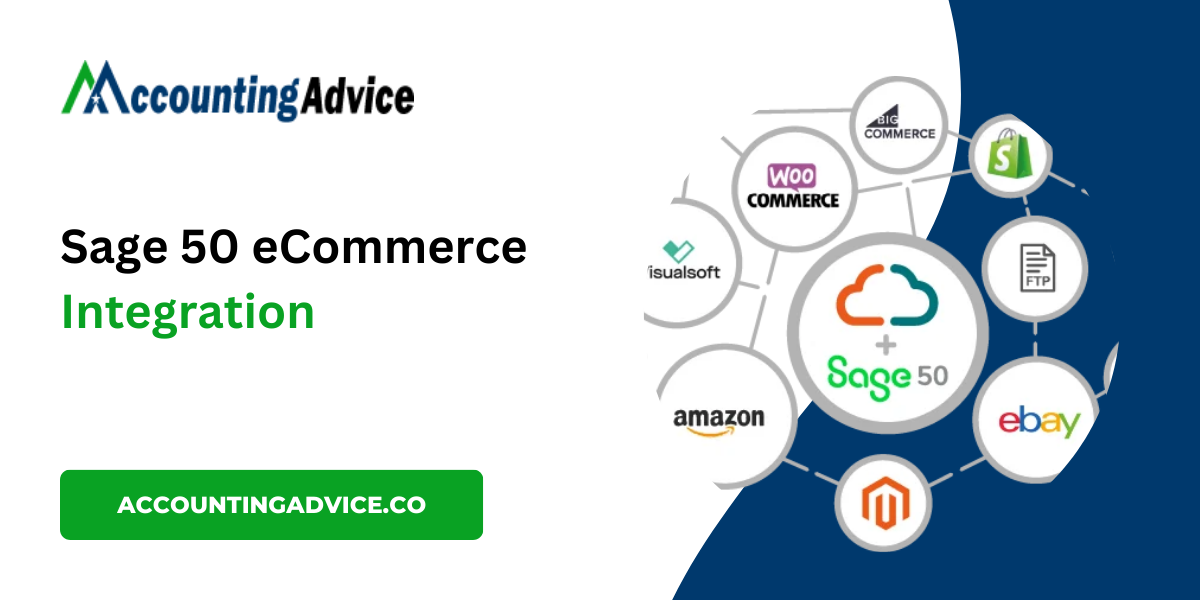As ecommerce continues to expand, businesses need to adopt solutions that integrate their sales, inventory, and accounting seamlessly. Sage 50 ecommerce integration offers a powerful way to connect your online store with your accounting software, ensuring data flows automatically between platforms. This integration can help you save time, reduce errors, and increase overall efficiency.
In this guide, we will explore the benefits, process, and key aspects of Sage 50 ecommerce integration.
What is Sage 50 Ecommerce Integration?
Sage 50 ecommerce integration is the process of connecting your ecommerce platform (such as Shopify, WooCommerce, or Magento) with Sage 50 accounting software. This integration automates the transfer of critical data, including sales orders, customer information, inventory updates, and financial records. Instead of manually entering data between the two systems, the integration ensures that both platforms are synchronized in real time.
Why You Should Integrate Sage 50 with Your Ecommerce Platform?
Managing a successful ecommerce business requires handling multiple tasks such as sales tracking, inventory management, and financial reporting. Without integration, these tasks often become time-consuming and prone to errors. Sage 50 ecommerce integration offers key advantages, including:
- Reduced Manual Data Entry: Automate the flow of data between your online store and Sage 50, minimizing the need for manual input.
- Real-Time Inventory Management: Keep your inventory up to date across both platforms, avoiding stockouts or overselling.
- Improved Accuracy: Eliminate data entry errors by automatically syncing order information, invoices, and payments to Sage 50.
- Faster Order Processing: Speed up fulfilment and shipping by processing orders more efficiently.
- Streamlined Financial Management: Get accurate, real-time financial reports by syncing sales and payment data directly to your accounting software.
Key Benefits of Sage 50 Ecommerce Integration
1. Increased Efficiency
By automating repetitive tasks, Sage 50 ecommerce integration frees up valuable time for your team. You no longer need to manually enter sales, update inventory, or reconcile financial records. This not only speeds up processes but also reduces human error.
2. Real-Time Inventory Synchronization
One of the most critical aspects of running an ecommerce store is managing your inventory. Sage 50 ecommerce integration ensures your stock levels are updated in real-time. This prevents overselling or running out of stock, enhancing customer satisfaction and improving business efficiency.
3. Accurate Financial Reports
When data is automatically synced between your ecommerce platform and Sage 50, you can rely on accurate, up-to-date financial reports. This allows you to better manage your cash flow, plan for growth, and make informed business decisions.
4. Improved Customer Experience
With quicker processing times and accurate inventory information, customers receive faster order fulfillment, leading to a smoother buying experience. This can help build customer loyalty and increase repeat business.
5. Scalability for Growing Businesses
As your business grows, handling increasing sales volumes and data becomes more complex. Sage 50 ecommerce integration allows you to scale effortlessly, handling higher transaction volumes and more extensive inventories without additional workload.
How to Implement Sage 50 Ecommerce Integration?
Setting up Sage 50 ecommerce integration is a straightforward process when following these steps:
1. Choose an Integration Solution
Several third-party integration solutions are available to connect your ecommerce platform to Sage 50. Popular options include OneSaas, Storehub.io, and Zapier. Each tool provides unique features, so choose the one that best fits your needs.
2. Install and Configure the Integration
Once you've selected your integration tool, install the software and configure it according to your business requirements. Follow the platform-specific setup guide to ensure your ecommerce platform is linked with Sage 50.
3. Map Your Data Fields
Proper data mapping ensures that information flows correctly between your ecommerce store and Sage 50. For example, product SKUs, customer details, and sales orders must be accurately matched across systems to avoid discrepancies.
4. Test the Integration
Before going live, perform several test transactions to ensure that data is transferring correctly. Check that sales, inventory, and customer data are accurately synced between your ecommerce platform and Sage 50.
5. Monitor and Optimize
Once the integration is active, it’s important to monitor its performance. Regularly check to ensure that everything is working smoothly and make adjustments if necessary.
Conclusion!
Sage 50 ecommerce integration provides a vital solution for online businesses looking to improve efficiency, streamline operations, and reduce errors. By automating data transfer between your ecommerce platform and Sage 50, you can focus on scaling your business and providing exceptional customer service.
Whether you're managing a small online store or a growing ecommerce business, integrating Sage 50 with your ecommerce platform can enhance productivity, accuracy, and overall business performance.
FAQs:
1. Can Sage 50 integrate with any ecommerce platform?
Sage 50 can integrate with a wide range of popular ecommerce platforms, including Shopify, WooCommerce, Magento, and BigCommerce. Ensure you choose an integration solution compatible with your platform.
2. How does Sage 50 ecommerce integration affect my inventory management?
Integration syncs your ecommerce inventory with Sage 50 in real-time, ensuring that stock levels are always accurate and up-to-date, preventing issues like overselling.
3. How much does it cost to set up Sage 50 ecommerce integration?
Costs vary depending on the third-party integration tool you choose. Some tools may charge a one-time setup fee, while others offer monthly subscription plans.
4. Does the integration require technical knowledge?
Most third-party integration tools provide user-friendly setup guides. While basic technical knowledge can be helpful, many integrations are designed to be easy for non-technical users.
5. What happens if my ecommerce platform updates?
Most integration tools automatically adjust to ecommerce platform updates. However, it’s always recommended to check with your provider to ensure compatibility with any major updates.





Comments